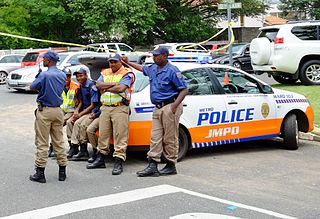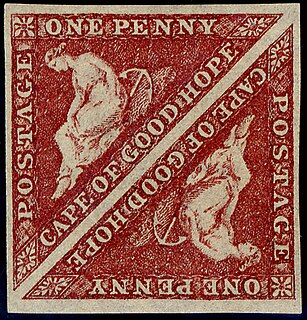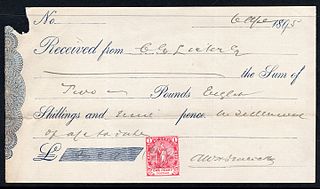Related Research Articles

The South African Republic was an independent and internationally recognised state located in what is now South Africa, from 1852 to 1902.

The Boer Republics were independent, self-governed republics in the last half of the nineteenth century, created by the Dutch-speaking inhabitants of the Cape Colony and their descendants, variously named Trekboers, Boers and Voortrekkers in mainly the middle, northern and north eastern and eastern parts of what is now the country of South Africa. Two of the Boer Republics achieved international recognition and complete independence: the South African Republic and the Orange Free State. The republics did not provide separation of church and state, and initially only the Dutch Reformed Church, then also other churches in the Calvinist Protestant tradition, were allowed. The republics came to an end after the Second Boer War which resulted in the British annexation and later incorporation into the Union of South Africa.

Griqualand East, officially known as New Griqualand, was one of four short-lived Griqua states in Southern Africa from the early 1860s until the late 1870s and was located between the Umzimkulu and Kinira Rivers, south of the Sotho Kingdom.
The following lists events that happened during 1877 in South Africa.
The following lists events that happened during 1874 in South Africa.

The Sunfoil Series is the main domestic first class cricket competition in South Africa, first contested in 1889-90. From 1990-91 it became known as the Castle Cup, from 1996-97 as the Supersport Series and from 2012-13 by The Sunfoil series. The Highveld Lions have won the title the most times.

The South African Police (SAP) was the national police force and law enforcement agency in South Africa from 1913 to 1994; it was the de facto police force in the territory of South West Africa (Namibia) from 1939 to 1981. After South Africa's transition to majority rule in 1994, the SAP was reorganised into the South African Police Service (SAPS).
The following lists events that happened during 1872 in South Africa.
The Cape Colonial Forces (CCF) were the official defence organisation of the Cape Colony in South Africa. Established in 1855, they were taken over by the Union of South Africa in 1910, and disbanded when the Union Defence Forces were formed in 1912.
The Supreme Court of South Africa was a superior court of law in South Africa from 1910 to 1997. It was made up of various provincial and local divisions with jurisdiction over specific geographical areas, and an Appellate Division which was the highest appellate court in the country.

Law enforcement in South Africa is primarily the responsibility of the South African Police Service (SAPS), South Africa's national police force. SAPS is responsible for investigating crime and security throughout the country. The "national police force is crucial for the safety of South Africa's citizens" and was established in accordance with the provisions of Section 205 of the Constitution of South Africa.

Ethnic, political and social tensions among European colonial powers, indigenous Africans, and English and Dutch settlers led to open conflict in a series of wars and revolts between 1879 and 1915 that would have lasting repercussions on the entire region of southern Africa. Pursuit of commercial empire as well as individual aspirations, especially after the discovery of diamonds (1867) and gold (1886), were key factors driving these developments.

Major General Sir Frederick Carrington,, was a British soldier and friend of Cecil Rhodes. He acquired fame by crushing the 1896 Matabele rebellion.

This is a survey of the postage stamps and postal history of Cape of Good Hope.

This is a survey of the postage stamps and postal history of South Africa.

Cape of Good Hope issued revenue stamps from 1864 to 1961. There were a number of different stamps for several taxes.
The Cape Mounted Police was the principal law enforcement agency of the Cape Colony during its last three decades. In addition to its ordinary policing duties, it was a para-military organisation, which saw active service in several campaigns and operations, including the Anglo-Boer War (1899–1902). The force was fully militarised in 1913 and transferred to the new South African Army as a mounted rifle regiment.
The Cape Peninsula Urban Police provided policing in and around Cape Town from 1652 to 1913.
References
- ↑ Resolution of the Council of Policy (5 December 1652).
- ↑ Resolutions of the Council of Policy (3 July 1686 and 11 September 1686).
- ↑ Ordinance 12 of 1825 (Cape of Good Hope).
- ↑ Ordinance 2 of 1840 (Cape of Good Hope).
- 1 2 3 4 5 6 Hattersley, A.F. (1960). The First South African Detectives
- ↑ Ordinance 25 of 1847 (Cape of Good Hope).
- ↑ Cape of Good Hope Government Gazette 2318 (28 November 1850) : Proclamation dated 26 November 1850.
- ↑ Act 3 of 1855 (Cape of Good Hope).
- ↑ Cape Town Water Police Act 1860 (Cape of Good Hope).
- ↑ Police Regulation Act 1882 (Cape of Good Hope).
- 1 2 3 4 Holt, H.P. (1913). The Mounted Police of Natal.
- ↑ South African Police Service Act 1995.
- ↑ South African Police Service Amendment Act 1998.